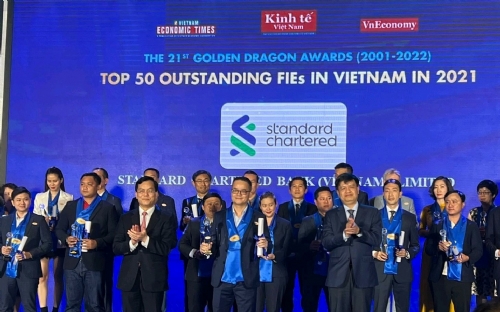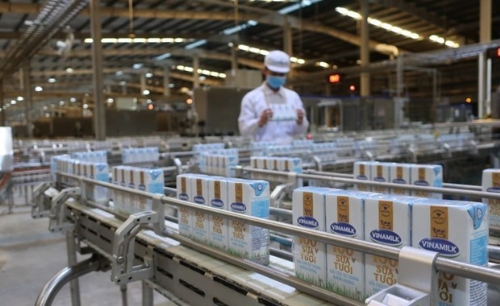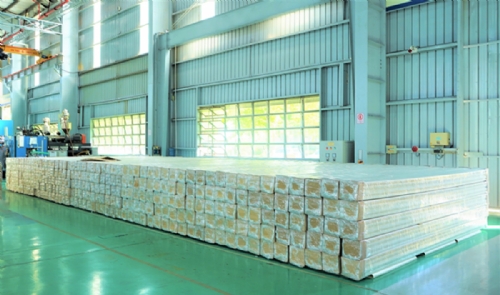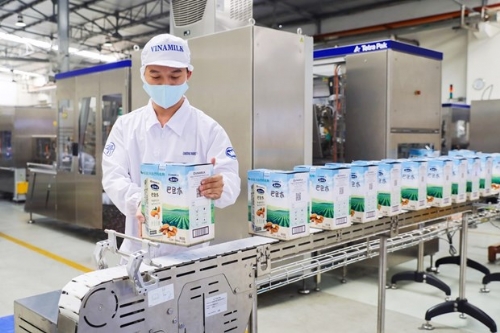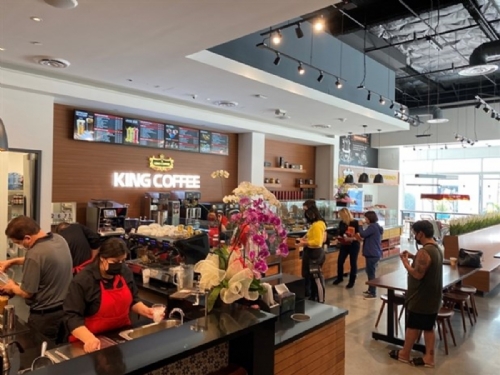Combining tradition and modernity a way forward for porcelain
Wednesday, September 25, 2019 10:43

Local porcelain producer Minh Long I, at the latest launch of a special product line in June, impressed not only with the functions of its new premium porcelain but also its cooperation with e-commerce platform Tiki on exclusive distribution. The family-owned porcelain company is not only pursuing its goal of creating breakthroughs for the health of local consumers but also approaching them in a creative marketing way.
Established in 1970, Minh Long I has specialized in exports and rapidly set foot in neighboring countries through producing and exporting huge volumes of products. It has affirmed its position in the world market, joining the oldest porcelain trade fair, in Frankfurt, Germany, since 2012.
Meanwhile, the domestic market, which was worth VND5 trillion ($215.5 million) in 2012, is dominated by imports, primarily from China. With cheap prices and various models, each family in Vietnam has at least one Chinese tea set or bowls and plates. Minh Long I, Hai Duong Ceramic, and other porcelain companies have struggled with this competition when focusing on product quality, leading to higher production costs. Mr. Ly Ngoc Minh, General Director of Minh Long I, said kilning is the most costly process and determines quality. Chinese products are cheap and low quality because they are kilned at low temperatures, which costs less.
Facing the challenge, local porcelain companies have invested significantly in technology to improve product quality and cut costs. Minh Long I has focused more on the domestic market and become the leading company, investing millions in technology and building standardized processes and quality control. Deputy General Director, Mr. Ly Huy Sang, Mr. Minh’s oldest son, spent seven years working his way up through the company and pushing this process. The proper implementation of production and inspection procedures has gradually garnered remarkable results. The quality of Minh Long’s products no longer fluctuates, as previously, and productivity and efficiency have increased, according to Mr. Sang.
Targeting the mid-end segment, in 2011, Hai Duong Ceramic also restructured its operations and improved the capacity of its technical and management teams to compete with imports in the domestic market.
Chu Dau Ceramic, established in 2001 by the Hanoi Trading Corporation (Hapro), a member of the BRG Group, has also slowly affirmed its position in the market after more than ten years researching and developing products combining traditional and modern designs. Its products are now appealing to young consumers as well as the older generation, used as household and decorative items and presented as gifts bearing Vietnamese cultural symbols from the government, organizations, and enterprises at important diplomatic events, according to Mr. Nguyen Huu Thuc, General Director of Chu Dau Ceramic JSC.
As demand for household ceramics is huge, Vietnamese consumers are willing to spend more on buying high-quality products, according to Mr. Vuong Manh Hoang, a local online marketing expert. Now is the right time for local companies to penetrate more deeply into the domestic market. This requires they move from small-scale to industrial production lines by applying high-tech equipment.
Mr. Vo Van Quang, a local branding expert, said the domestic market is huge and has substantial potential, with local producers keen to bolster their presence in the food and beverages, hospitality, and tourism industries. “Minh Long I has been quite a phenomenon,” he said. “CEO Minh is truly a perfectionist. He has combined ultimate production skills with a deep understanding of Vietnamese culture and how high-income people use ceramics, from creating high-end chopsticks to convenient tea pot sets. He has brought about a new level of enjoying traditional culture in modern life.”
In theory, a marketing strategy has to have two key directions: firstly, looking at market trends, both new and old, and even ancient values, and secondly, combining value chains with technological advancements in innovation. “Minh Long I understands how marketing can combine high-technology to create processes that use old skills to make fashionable new designs,” Mr. Quang said. “Chu Dau Ceramic and Cuong Phat know that they need follow Mr. Minh’s advanced production lines but may not able to reach such a level.”
Other companies, he went on, should take a different approach, such as art-by-item, taking advantage of uniformity in making unique products and unique pieces of art and being more creative in making low-production items. The boundaries for creating new things are wide open, and the global market has enough room for everyone.

Growing ambition
Minh Long I is a rare ceramics company, in that it digitizes almost all of its operations. It is also the only Vietnamese ceramics company owning a “dark factory”, with dozens of robots fully automating the production line since 2017. In design, the company was the first ceramic company in Vietnam to apply 3D design and printing technology. It has now transformed from an artisan ceramic company to a 4.0 ceramic company, applying the most advanced global technology in its production.
Higher product quality and productivity have helped its products conquer the domestic market, and it no longer exports almost all of its products. It produced about 10,000 products a day in 2012, with 1,200-1,300 employees, but can now produce up to 250,000 products a day with only 2,400 employees. Annual turnover rose from $4 million in 2012 to over $50 million now.
It has set a goal of being the leading brand in the domestic market and accounting for 40 per cent of exports over the next two years, piloting new ideas and seizing upon new trends.
Mr. Quang sees the drive towards replacing plastic as being a huge opportunity for local producers like Minh Long I, such as ceramic shampoo and handwash containers in high-end cafés and hotels. Many plastic bottles are now being replaced by durable and re-usable ceramic items. And major brands can make an impression in the global market and its billions of consumers. “Ceramic English tea sets thrived for hundreds of years based on their ‘English’ style, as did Chinese porcelain, and now Vietnamese porcelain can do the same,” he said.
Other news
- Standard Chartered Vietnam named "Leading Foreign Bank in Vietnam" in 2021(4/26/2022 3:47:07 PM)
- Vietnam’s largest dairy producer eyes 5-percent revenue growth in 2022(3/25/2022 10:15:24 AM)
- THACO exports hydroponic plastic pipes to Israel(11/15/2021 2:58:07 PM)
- Vinamilk pins hope on Philippine market(9/7/2021 10:28:23 AM)
- Vietnam’s TNI King Coffee opens first coffee-chain store in the US(6/17/2021 9:54:49 PM)
- THACO exports largest-ever batch of automobiles, components, spare parts(2/23/2021 8:43:33 AM)
- Hoa Phat Group exports 22,000 tonnes of galvanised steel sheets in Jan-Feb(2/18/2021 9:45:47 AM)
- Standard Chartered forecasts Vietnam’s 2021 GDP growth at 7.8%(1/22/2021 3:08:50 PM)
- FITCH RATES STANDARD CHARTERED BANK VIETNAM “BB” WITH STABLE OUTLOOK(12/15/2020 4:31:28 PM)
- DEEP C Industrial Zones made it into the top 100 sustainable enterprises in Vietnam 2020.(12/15/2020 11:07:27 AM)
The featured news
-
Standard Chartered Vietnam named "Leading Foreign Bank in Vietnam" in 2021
-
Vietnam’s largest dairy producer eyes 5-percent revenue growth in 2022
-
THACO exports hydroponic plastic pipes to Israel
-
Vinamilk pins hope on Philippine market
-
Vietnam’s TNI King Coffee opens first coffee-chain store in the US


